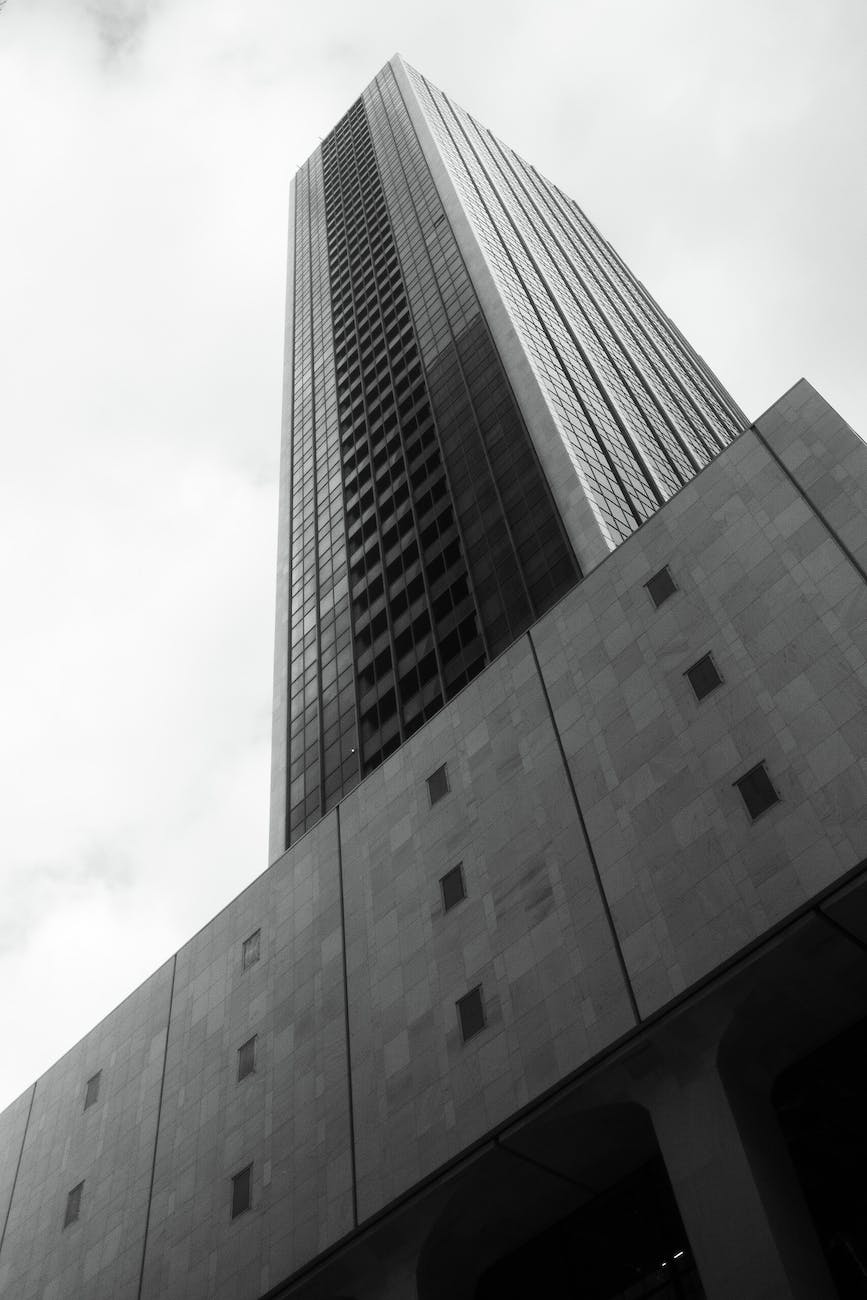Introduction:
Skyscrapers, the architectural marvels that grace our urban landscapes, are not just a testament to human ambition but also to the precision of engineering beneath the surface. The foundation of a tall building is the bedrock of its stability, endurance, and safety. In this comprehensive exploration, we delve into the intricate world of building foundation design for skyscrapers, dissecting the soil considerations, types of foundations, and the critical process of selecting the right foundation.
Skyscrapers, towering over cityscapes, are not just feats of architectural brilliance but also engineering precision. The key to their magnificence lies beneath the ground – in the foundation. The foundation of a tall building is not merely the support; it’s a calculated choice that ensures stability, durability, and safety. In this journey through the world of skyscraper foundation design, we unravel the complexities and critical decisions that shape the very essence of these colossal structures.
Here’s a table summarizing the key points discussed in the blog post:
| Section | Key Points |
|---|---|
| Introduction | Importance of foundation design in skyscrapers. |
| Foundation Basics | – Soil composition varies. – Deep foundations (e.g., piles) for stability. – Shallow foundations (e.g., mat foundations) for lighter structures. |
| Types of Foundations | – Pile foundations: Deep columns into stable soil. – Raft foundations: Spreads load over a large area. – Caisson foundations: Large cylinders for challenging soil. |
| Geotechnical Considerations | – Understanding soil layers. – Water table impact. – Bedrock for stability. |
| High-rise vs. Low-rise Foundations | – High-rises face unique challenges. – Low-rise foundation principles remain critical. – Building weight influences foundation choice. |
| Foundation Design Process | – Structural engineers play a key role. – Criteria for foundation selection. – Parameters influencing design. |
| Foundation Settlements | – Excessive settlements compromise stability. – Design verification to prevent settlement issues. |
| Foundation Options for Different Building Heights | – Shallow foundations for buildings up to 4 stories. – Deep foundations for tall structures. – Factors influencing the selection process. |
| Case Studies | – Success stories emphasize planning and precision. – Failures offer lessons for improvement. |
| Summary | – Importance of soil analysis. – Influence of building height. – Consideration of geotechnical factors. – Role of structural design. – Critical foundation selection process. |
Foundation Basics: Understanding the Soil and Types of Foundations:
Understanding Soil Composition:
The soil beneath our feet is not uniform. It varies in composition, and understanding its layers is fundamental to designing the right foundation. The success of a skyscraper’s foundation hinges on a meticulous analysis of the soil’s bearing capacity, determining how much load it can support without excessive settlement.
Deep Foundations vs. Shallow Foundations:
The choice between deep and shallow foundations is pivotal. Deep foundations, such as pile foundations, delve into stable soil or bedrock, suitable for areas with challenging soil conditions. In contrast, shallow foundations, like mat foundations, spread loads over a larger area and are suitable for lighter structures or stable surface soil.

Types of Foundations for Skyscrapers: Navigating the Options:(Chosen Foundation)
Pile Foundations:
Pile foundations involve driving slender columns deep into the ground, reaching stable soil or bedrock. This method is often preferred in urban settings or areas with limited space.
Raft Foundations:
Raft foundations, also known as mat foundations, distribute the load over a wide area. They are suitable for skyscrapers with evenly distributed loads and stable soil conditions.
Caisson Foundations:
Caisson foundations, large-diameter cylinders, are either drilled or sunk into the ground. These are effective in areas with challenging soil conditions and high water tables.
Geotechnical Considerations: Navigating the Subsurface Landscape:
Soil Layers and Their Impact:
Understanding the layers of soil is crucial. Different layers have varying load-bearing capacities, influencing the foundation design. The depth of excavation and the type of foundation selected are intricately tied to these geotechnical considerations.
Water Table Influence:
The proximity of the water table can significantly impact foundation design. High water tables pose challenges, demanding special considerations to prevent water-induced issues, such as buoyancy and soil erosion.
Bedrock as a Foundation Support:
In regions where stable soil is deep below the surface, reaching bedrock becomes a viable option. Foundations anchored to bedrock provide a solid base for skyscrapers, ensuring stability against geological shifts.
High-rise vs. Low-rise Foundations: Tailoring Solutions for Building Heights:
Unique Challenges in High-rise Buildings:
The construction of high-rise buildings introduces unique challenges. These structures experience increased loads and forces, demanding foundations capable of handling the vertical and lateral pressures exerted by the towering heights.
Designing Foundations for Low-rise Structures:
While the focus often falls on high-rise buildings, the design of foundations for low-rise structures is equally critical. The principles may vary, but the importance of a well-designed foundation remains paramount.
Influence of Building Weight on Foundation Choice:
The weight of the building plays a crucial role in foundation selection. The foundation must be designed to support the combined weight of the structure, occupants, and any additional loads.
Foundation Design Process: The Symphony of Structural Engineering:
The Role of Structural Engineers:
Structural engineers are the conductors of the foundation symphony. Their expertise ensures that the foundation can withstand the structural loads and environmental forces, orchestrating a harmonious balance between design and safety.
Criteria for Foundation Selection:
The criteria for selecting the right foundation are diverse. Factors such as soil conditions, building height, and structural loads influence this critical decision, demanding a holistic approach to design.
Parameters Influencing Design:
In the intricate dance of foundation design, various parameters come into play. From soil bearing capacity to settlement considerations, each parameter shapes the design process, ensuring a foundation that stands the test of time.
Foundation Settlements: Addressing Challenges and Ensuring Stability:
Addressing Excessive Settlements:
Excessive settlements can compromise the stability of a structure. Through meticulous design and engineering, structural engineers mitigate settlement risks, ensuring the longevity and safety of the skyscraper.
Verification of Design to Prevent Settlement Issues:
Verifying the design through rigorous analysis and testing is a crucial step. This ensures that the foundation can withstand the loads imposed by the structure and minimizes the risk of settlement issues down the line.
Foundation Options for Different Building Heights: Tailoring Solutions for Vertical Challenges:
Considerations for Buildings Up to 4 Stories:
For lower structures, shallow foundations up to 4 stories may suffice. Understanding the building weight and soil conditions allows for the selection of a foundation that balances cost-effectiveness with structural integrity.
Designing Foundations for Tall Structures:
The design process for tall buildings involves a meticulous analysis of loads, forces, and soil conditions. Deep foundations, such as piles or caissons, become instrumental in providing the necessary support for skyscrapers.
Factors Influencing the Selection Process:
The selection of the right foundation is influenced by a myriad of factors. From the type of soil to the surrounding environment, each consideration shapes the decision-making process, ensuring a foundation that aligns with the unique challenges posed by tall structures.
Case Studies: Lessons from Successes and Failures:
Examining Successful Foundations:
Real-world case studies provide valuable insights into the triumphs of well-designed foundations. Success stories showcase the importance of meticulous planning, engineering precision, and a deep understanding of the local environment.
Learning from Failures in Foundation Design:
Failures in foundation design offer equally important lessons. Whether caused by inadequate soil analysis or design flaws, understanding these failures is crucial to advancing the science of foundation engineering.
Summary: Key Takeaways for Building Stable Foundations:
- Importance of Soil Analysis: A thorough understanding of soil composition is fundamental to foundation design, influencing the choice of foundation type and design parameters.
- The Influence of Building Height: Tall structures demand specialized foundations capable of handling increased loads and forces, emphasizing the need for a meticulous design process.
- Consideration of Geotechnical Factors: Geotechnical considerations, including soil layers, water tables, and bedrock, significantly impact foundation design, requiring tailored solutions for stability.
- Role of Structural Design: Structural engineers play a pivotal role in orchestrating the design process, ensuring that the foundation can withstand the structural loads and environmental forces.
- The Critical Process of Foundation Selection: The selection of the right foundation involves a comprehensive analysis of factors such as soil conditions, building height, and settlement considerations, culminating in a choice that balances durability and cost-effectiveness.
In conclusion, the world beneath a skyscraper is as vital as the structure itself. Choosing the right foundation is an art and science, a symphony of engineering precision and geological understanding. As we marvel at the heights of our urban landscapes, let us not forget the intricate dance happening beneath our feet – the dance of foundations that ensure the stability and endurance of our architectural aspirations.
Sameera Building Construction
Your One-Stop Shop for Building Dreams (Literally!)
We've got bricks, we've got beams, and we've got a bunch of hard hats.
Because when it comes to construction, we don't just build buildings; we build stories.
Visit Us Now and Join the Fun!Source link
